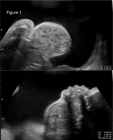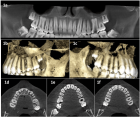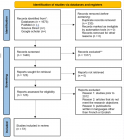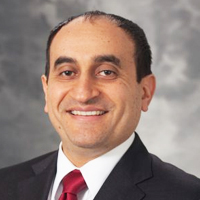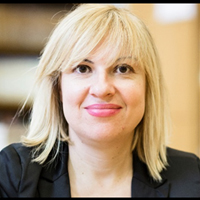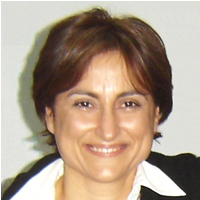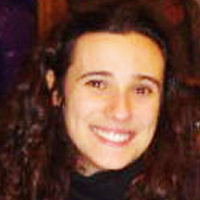Table of Contents
Update on Mesenchymal Stem Cells
Published on: 27th February, 2024
Mesenchymal Stromal/Stem Cells (MSCs); which can be isolated from Bone Marrow (BM) in addition to several tissues and body fluids; have the following characteristic features: self-renewal, differentiation into various cell types, plastic adherence, and specific surface markers on flow cytometry [1-3].
Forensic Aspects and Dilemmas in Gynecological Laparoscopy
Published on: 29th April, 2024
Gynecological laparoscopy has to be analyzed also in the context of complications that occur during the surgical procedures. Complications occur daily. For this reason, emphasis should be placed on lifelong continuous education and training. Given the risks and complications we face, we must be trained to deal with them. This improves the safety of laparoscopic operations. Without such certainty, gynecological laparoscopy would not be the method of choice in a minimally invasive approach. This requires significant commitment, effort, and responsibility. In this way, we provide our patients with the best and highest quality healthcare service. Likewise, with such an approach, the frequency of complications is reduced to a minimum. New perspectives and possibilities are associated with the application of robotic surgery.
The Healing and Aging-related Properties of Adipose Tissue Fragments Obtained through the Guided SEFFI Procedure’s Mechanical Fragmentation are Facilitated by the Exosomes Present in the Final Injection
Published on: 1st May, 2024
The Injection of autologous Adipose-Derived Stem Cells (ADSCs) and Stromal Vascular Fraction (SVF) into dermal and subdermal layers can improve skin volume and rejuvenation. The SEFFI (Superficial Enhanced Fluid Fat Injection) technique, which involves minimal manipulation of autologous microfragmented adipose tissue, was utilized for harvesting and re-injection, using the SEFFILLER™ disposable medical device. Mechanical fragmentation of adipose tissue is a well-established surgical technique that stimulates tissue regeneration, filler, and biological activity. The study evaluated the biological properties (regenerative and anti-aging) of different harvest and processing fat graft methods among which the fragmented adipose tissue, specifically focusing on the presence of exosomes. Exosomes, nanometer-sized vesicles produced by cells for cellular communication, were found to contain miRNAs with anti-inflammatory, regenerative, and vascular content. The products’ contained exosomes were confirmed in the study through electron microscopy, Western Blotting, gene expression, and sequencing of miRNA content.
The Outcome of Outpatient Intermediate and High Dose Cytarabine Consolidation Chemotherapy in Patients with Acute Myeloid Leukemia. The Experience of King Fahad Specialist Hospital in Dammam, Saudi Arabia
Published on: 9th May, 2024
Background: Adult patients with Acute Myeloid Leukemia (AML) have traditionally been hospitalized for the duration of intensive consolidation chemotherapy until blood count recovery to avoid complications. Recently, there has been a trend to shift the care of AML patients treated with intensive chemotherapy from inpatient to outpatient settings to reduce treatment costs and save beds. Methods and materials: A retrospective study of AML patients who received cytarabine consolidation chemotherapy between the 1st of August 2016 and the 31st of December 2023 at King Fahad Specialist Hospital in Dammam, Saudi Arabia was performed. Results: Over a period of 7 years and 4 months, 62 patients received a total of 127 cycles of intensive consolidation chemotherapy at outpatient setting. At diagnosis: 12 patients had extramedullary disease, and 17 patients had adverse cytogenetic abnormalities. Following the 127 cycles of chemotherapy, 38 episodes of febrile neutropenia were encountered, and 46 hospital admissions were required. No complications were encountered following 62.2% of the cycles of consolidation therapy and no early mortality due to intensive consolidation therapy was reported. Out of 62 patients studied, 36 patients underwent various forms of hematopoietic stem cell transplantation. Disease relapses were encountered in 24 patients and the 5-year incidence of relapse for the entire group of patients was 42%. The 5-year leukemia-free survival for the: entire study patients, transplanted patients, and non-transplanted patients were: 43%, 38%, and 50% respectively. The 5-year overall survival for the: entire study patients, transplanted patients, and non-transplanted patients were: 44%, 34%, and 65% respectively. At the end of follow-up: 37 patients (59.68%) were alive, 24 patients (38.71%) were dead, and the fate of 1 patient (1.61%) was unknown as the patient moved to another hospital. Conclusion: Administration of intensive consolidation chemotherapy for patients with AML at outpatient setting is safe, feasible, and cost-effective. The incidence of infectious complications was relatively low. No early treatment-related mortality due to intensive consolidation therapy was encountered. Outpatient administration of intensive consolidation therapy can save beds, reduce hospital costs, and is associated with short-term and long-term outcomes that are comparable to inpatient administration of consolidation therapy.
Therapeutic Implications of Stem Cell Secretome
Published on: 17th June, 2024
The stem cell secretome is a collective mixture of soluble and insoluble factors released by stem cells during paracrine communication and/or autocrine signaling. In addition to intracellular communication, these paracrine factors play an integral role in tissue development and generation, acting as the primary driving force in the regenerative properties of stem cells. Despite such great potential of stem cell secretome in therapeutic applications, the lack of secretome-based treatments available for the public at the time of writing is odd and puzzling. Hence, this review aims to provide insights into recent advancements in understanding the stem cell secretome, as well as discuss future possibilities and current limitations that must be overcome for the proper development of secretome-based therapies. Through utilizing the MEDLINE database from the National Library of Medicine® (NLM), we found that while there is much evidence of the therapeutic effects of secretome-based therapy, flaws involving regulations and standardization hinder it from revolutionizing regenerative medicine at present. It is cardinal to emphasize that while secretome-based therapy may be the solution for many untreatable conditions, much research is still required before it is approved for clinical practice.
Fifteen year Follow-up of Relapsed/ Refractory Patients with Hodgkin Lymphoma Treated with Autologous Hematopoietic Stem Cell Transplantation
Published on: 2nd July, 2024
We reviewed our outcomes of patients with relapsed/refractory Hodgkin Lymphoma treated with autologous stem cell transplant over a 30-year period, 1992 to 2022 and are reporting 15-year Disease-Free Survival (DFS) and Overall Survival (OS) of the 36 patients treated (19 men, 17 women, median age 41). Over the years there were different preparative regimens employed (carmustine, etoposide, melphalan and BCNU, etoposide, cytarabine, and melphalan) as well as post-transplant consolidation therapy (brentuximab). With a median follow-up of 15 years, the DFS is 52% and OS is 64%. Long-term complications include cardiomyopathy and second malignancies.The use of better salvage regimens and post-transplant consolidation therapy should lead to better outcomes.

HSPI: We're glad you're here. Please click "create a new Query" if you are a new visitor to our website and need further information from us.
If you are already a member of our network and need to keep track of any developments regarding a question you have already submitted, click "take me to my Query."






